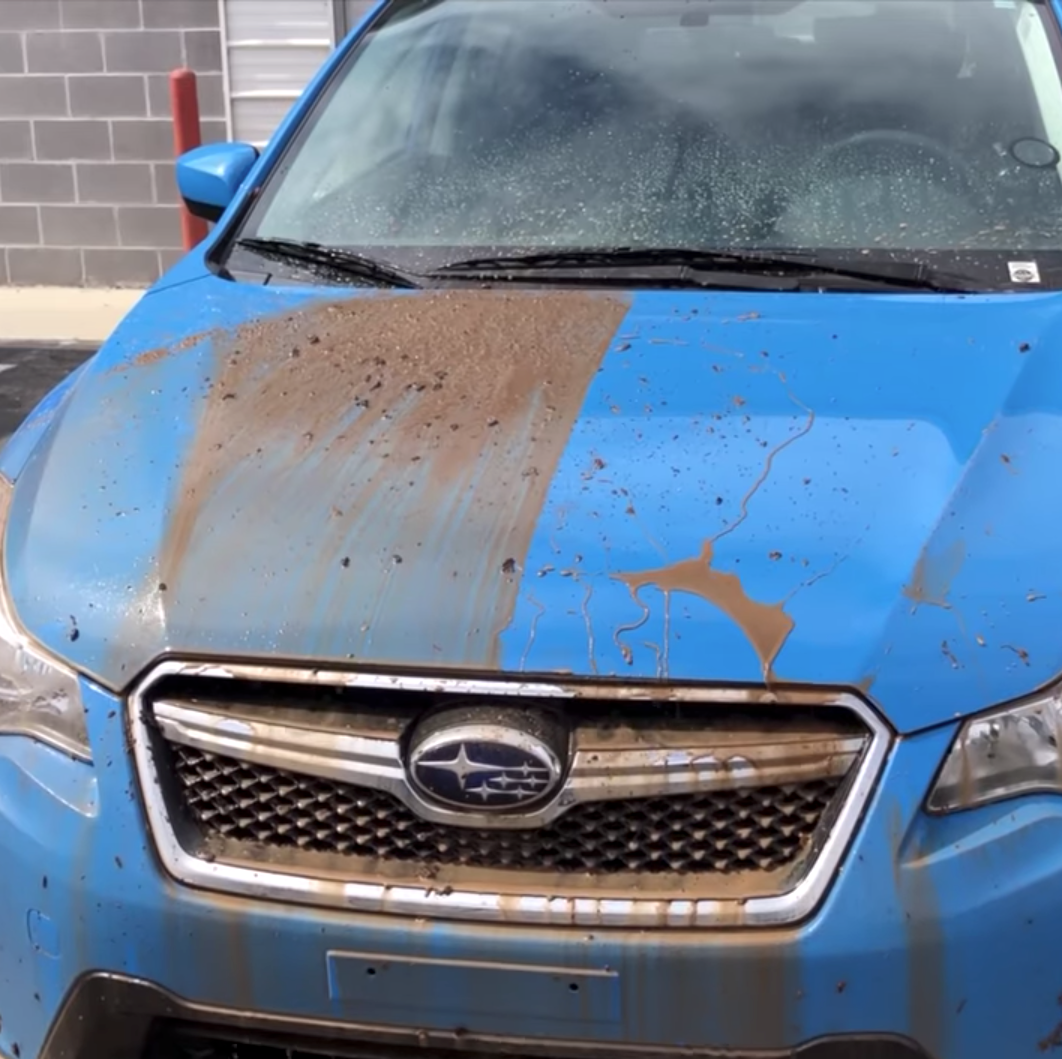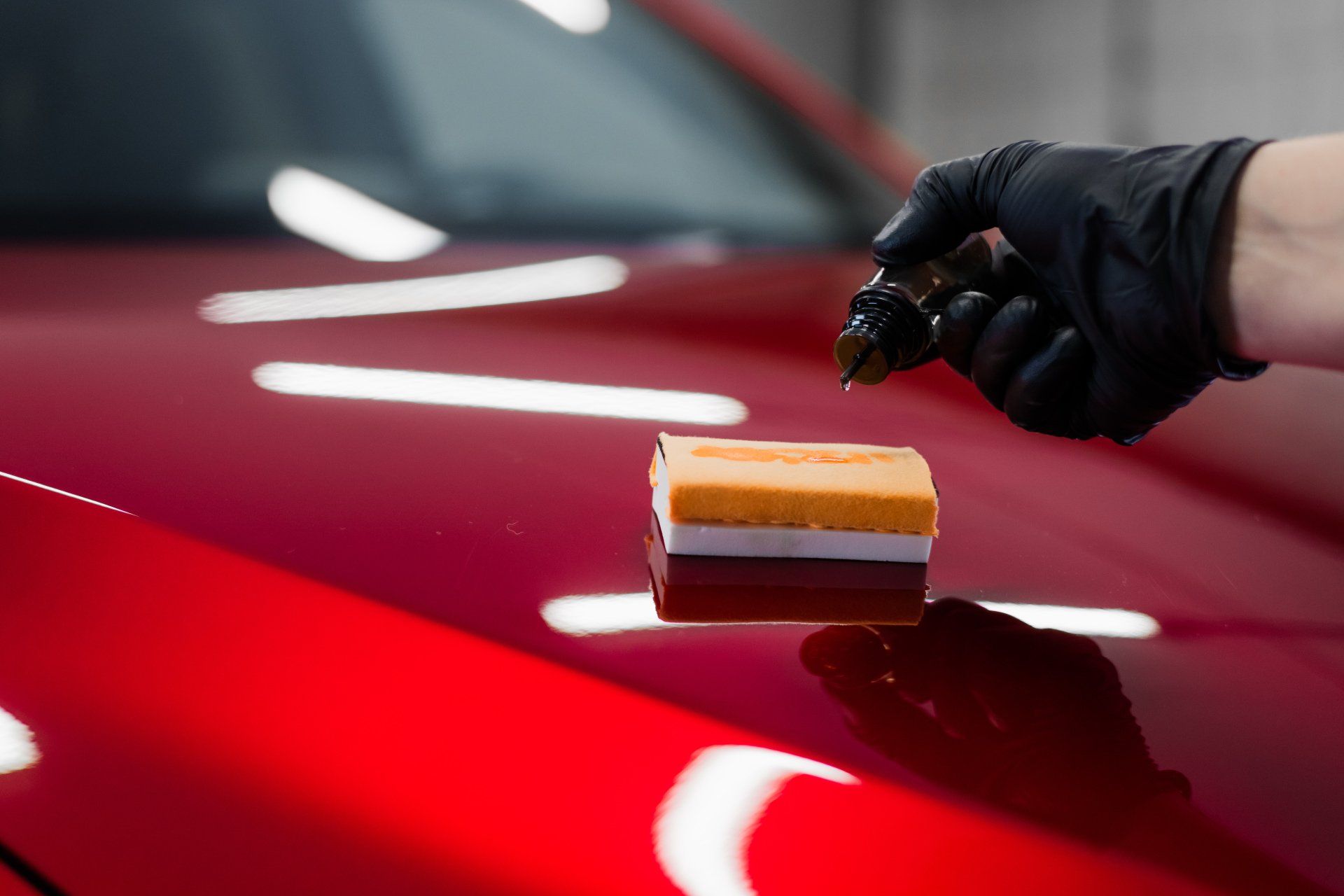Exploring the Science Behind Car Ceramic Coating and Its Safety Features
The science of car ceramic coating presents an interesting study in advanced automotive defense. Composed mainly of silicon dioxide and polymers, these finishings develop a durable bond with lorry paint. This communication enhances resilience versus environmental threats while using hydrophobic advantages. Nevertheless, the details of just how these coatings job and their lasting advantages remain less recognized. Unpacking these details reveals why ceramic coatings are ending up being a favored choice for lorry treatment
What Is Ceramic Coating?
Ceramic coating is a fluid polymer that chemically bonds to the surface area of an automobile's paint. This innovative safety layer enhances toughness and uses superior resistance to environmental aspects. Unlike typical wax or sealers, which offer momentary protection, ceramic finishings create a long-lasting shield that can hold up against harsh conditions such as UV rays, acidic impurities, and severe climate. When used correctly, the coating forms a hydrophobic surface area, triggering water to bead and slide off, which helps in maintaining the lorry's sanitation. In addition, it provides improved gloss and deepness to the paint, making the vehicle show up more refined and vibrant. The application process commonly involves extensive surface preparation, consisting of cleansing and polishing, to ensure peak bonding. Therefore, ceramic finishes are ending up being progressively prominent among car enthusiasts and those seeking to shield their investments, assuring to preserve the automobile's aesthetic charm while lowering the regularity of upkeep.
The Make-up of Ceramic Coatings
The complex solution of ceramic finishings mostly contains silicon dioxide (SiO2), which is stemmed from all-natural resources like quartz and sand. This crucial component supplies the structure for the coating's sturdiness and safety high qualities. Along with SiO2, ceramic finishes frequently consist of different polymers and ingredients that enhance attachment, versatility, and resistance to environmental factors. These substances function synergistically to produce a robust barrier against impurities such as dirt, chemicals, and UV rays.Furthermore, some solutions include titanium dioxide (TiO2) or various other nanomaterials, which can increase the coating's hydrophobic properties, causing improved water repellency. The exact make-up can differ considerably amongst producers, impacting efficiency and durability. Ultimately, the combination of these components finishes in a protective layer that not just boosts the visual allure of cars however also serves to extend their life expectancy by securing the surface from prospective damages.
Just How Ceramic Coatings Work
Understanding how ceramic coatings function involves exploring their chemical make-up, which adds to their safety top qualities. The application procedure is vital for accomplishing perfect results, while durability and sturdiness variables figure out the coating's efficiency gradually. With each other, these components highlight the advantages and efficiency of ceramic finishings for automobile security.
Chemical Structure Explained
While numerous car owners seek long-lasting security for their vehicles, the chemical structure of ceramic coverings plays an essential role in their effectiveness. These coverings largely are composed of silicon dioxide (SiO2), which is originated from all-natural minerals. This compound forms a solid bond with the lorry's paint, producing a durable, safety layer. Furthermore, many ceramic finishings contain titanium dioxide (TiO2), improving their hydrophobic properties and resistance to UV rays. The presence of polysiloxanes can further enhance versatility and durability. Together, these elements add to the coating's capacity to repel water, dirt, and impurities, while additionally offering a high-gloss finish. Comprehending this chemical foundation assists car proprietors value the robust defense used by ceramic layers.
Application Refine Introduction
Applying ceramic finishings involves a meticulous process that ensures ideal bonding and security for the automobile's surface area. Extensive cleansing and decontamination of the car's exterior are performed to eliminate dirt, grime, and previous waxes. This action confirms that the surface area is totally free from impurities that could prevent adhesion. Following this, the paint is often brightened to boost quality and remove any flaws. Once prepared, the ceramic coating is applied in little areas making use of an applicator pad, enabling for consistent protection. The coating is then entrusted to treat, forming a strong chemical bond with the surface area. Correct curing times and problems are crucial, as they confirm the coating attains its maximum performance and safety high qualities.
Longevity and Durability Factors
Ceramic coatings are made to offer resilient security through their advanced chemical composition, which produces a durable barrier against environmental impurities. The durability of these layers is affected by elements such as the thickness of the application, the top quality of the product, and the conditions under which the car is exposed. Top notch ceramic finishings can last a number of years, standing up to scrapes, UV rays, and chemical spots. Correct maintenance, consisting of normal washing and regular reapplication, can additionally improve durability. In addition, environmental aspects like climate and exposure to contaminants can affect the life expectancy of the coating. Generally, when applied and maintained appropriately, ceramic finishings offer phenomenal durability, making them a popular choice for car lovers seeking to preserve their automobile's look.
Hydrophobic Features and Water Repellency
Hydrophobic buildings are a characteristic of high quality car ceramic finishings, significantly boosting the lorry's surface area performance. These layers develop a molecular bond with the car's paint, leading to a surface area that pushes back water successfully. When water enters into contact with a ceramic-coated surface area, it beads up and rolls off, lessening the quantity of fluid that stays on the paint. This habits not only adds to an aesthetically pleasing appearance yet additionally decreases the build-up of pollutants such as dirt, crud, and road salts.The improved water repellency causes less complicated cleansing and upkeep, as much less initiative is called for to get rid of undesirable substances. In addition, the hydrophobic nature of ceramic coverings assists in preventing water spots, which can mar the finish of uncoated surface areas. On the whole, the unification of hydrophobic homes in ceramic finishes plays an essential role in keeping the lorry's immaculate appearance while streamlining maintenance.
Protection Versus Scratches and UV Damages
Car ceramic finishings provide considerable protection against scratches and UV damages. The moved here scratch resistance system creates a durable layer that soaks up effects, while the UV shielding benefits aid preserve the car's paint integrity with time. Together, these functions add to a longer-lasting and aesthetically enticing finish.
Scrape Resistance Device
Using innovative innovation, ceramic finishes give a durable shield against scrapes and UV damages, improving the long life and look of automobile surface areas. The scratch resistance device of these coverings is credited to their special molecular structure, which forms a sturdy bond with the automobile's paint. This bond develops a hard, safety layer that can absorb effects and resist abrasions. Additionally, the smooth surface area of the coating decreases friction, making it difficult for impurities to adhere and create scratches. The chemical structure of ceramic finishings often consists of nanoparticles that reinforce the protective layer, further improving its strength. Vehicles treated with ceramic coverings exhibit markedly enhanced scratch resistance contrasted to typical wax or sealants, guaranteeing an excellent surface over time.
UV Shielding Benefits
The protective top qualities of ceramic finishes extend past scrape resistance to consist of significant UV securing benefits. These finishings create a robust obstacle that reflects harmful ultraviolet rays, guarding the automobile's paint and underlying materials. Extended exposure to UV radiation can bring about fading, oxidation, and deterioration of the paint coating. By incorporating ceramic coatings, lorry proprietors can successfully reduce these risks, maintaining the visual allure and stability of their autos. Furthermore, the UV blocking residential properties add to improved durability, reducing the regularity of repainting and upkeep. Eventually, the assimilation of ceramic coatings supplies a complete option for protecting cars from the destructive results of sun exposure, making sure a continual, vivid appearance in time.
The Longevity and Maintenance of Ceramic Coatings

Frequently Asked Concerns
Can Porcelain Coating Be Applied to Any Type Of Type of Lorry?
Ceramic coating can be applied to numerous types of vehicles, consisting of cars, vehicles, and bikes. Surface area preparation and compatibility with details products are necessary for perfect adhesion and efficiency of the coating.
Exactly How Much Does Ceramic Coating Commonly Expense?
Ceramic coating usually costs between $500 and $2,000, depending on factors such as lorry size, coating top quality, and specialist application. The financial investment can offer durable protection and improve the lorry's look in time.

Is Professional Application Needed for Finest Outcomes?
The requirement of professional application typically relies pop over to this web-site on preferred outcomes. Experts usually guarantee appropriate surface area prep work and application methods, bring about optimal bonding and longevity of the coating, which may be testing for unskilled people to accomplish.
Can Ceramic Coatings Be Removed or Fixed?
Ceramic finishes can be eliminated or repaired, though the procedure may require certain solvents or methods - Ceramic Coating Newark. Correct removal is vital to avoid damage to the underlying surface, emphasizing the importance of professional assistance for optimal results
Exactly How Does Ceramic Coating Contrast to Conventional Wax?
The contrast between ceramic coating and standard wax exposes that ceramic coverings supply exceptional resilience, enhanced security versus environmental contaminants, and longer-lasting sparkle, while wax requires a lot more frequent application and supplies much less general resistance to damage.